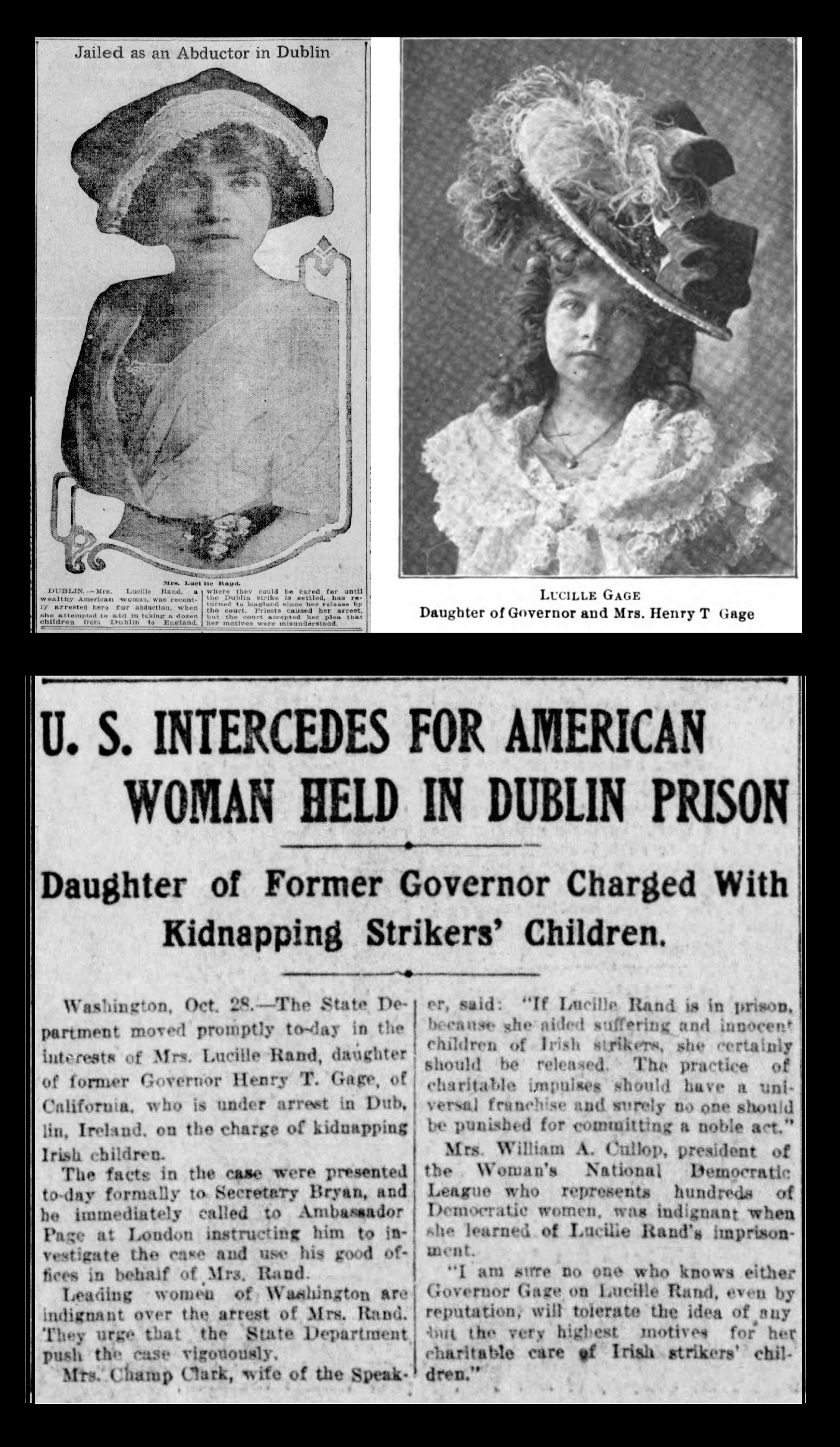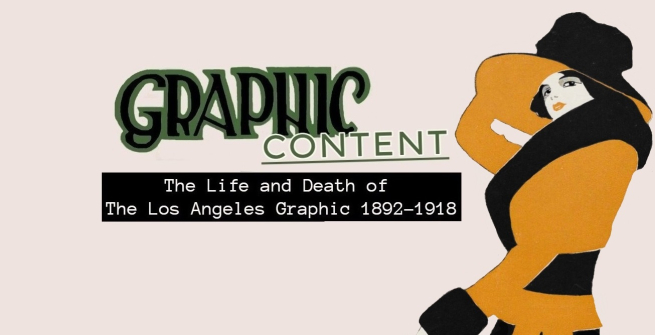This is part four of a seven-part blog series exploring the long-forgotten Los Angeles arts & culture magazine The Graphic. The Los Angeles Public Library owns what is likely the most complete collection of this magazine anywhere, and our participation in California Revealed means that we can share this rare and unique resource with the world. As part of reintroducing this long-forgotten Los Angeles arts & culture magazine to contemporary audiences, the next few entries in this series will focus on the history of the publication and the Angelenos who kept it operating for twenty-six years.
Part IV: Albert Porter, Charles Lapworth and Elbridge Rand Years
On July 28, 1916, Sam Clover sold The Graphic to Albert D. Porter. Porter, a publisher from New York, had relocated to Pasadena following the death of his wife in 1914. Porter had founded one of the most successful magazines, The Housewife, and, despite being largely forgotten today, it made Porter very rich. Porter had "retired," but purchasing The Graphic was, evidently, an opportunity that was too good to pass up. The South Pasadena Record reported that Porter envisioned beefing up The Graphic’s financial and sports reporting but Porter’s tenure as owner was generally indistinguishable from Clover’s time at the helm. Porter was a smart man, and he seemed to subscribe to the old adage, "if it ain’t broke, why fix it?" The most remarkable aspect of Porter’s time as owner was the man he hired as editor, Charles Lapworth. Lapworth was born in Willenhall, England, in 1878 and gained some notoriety as a reporter for the London Daily Mail covering the Turco-Italian campaign in Tripoli. His time in North Africa eventually culminated in a book on Italian colonization entitled Tripoli and Young Italy (1912). Sometime around 1915, Lapworth decided to make his way to Los Angeles, and less than a year later, he was hired by Porter as editor of his newly acquired magazine.
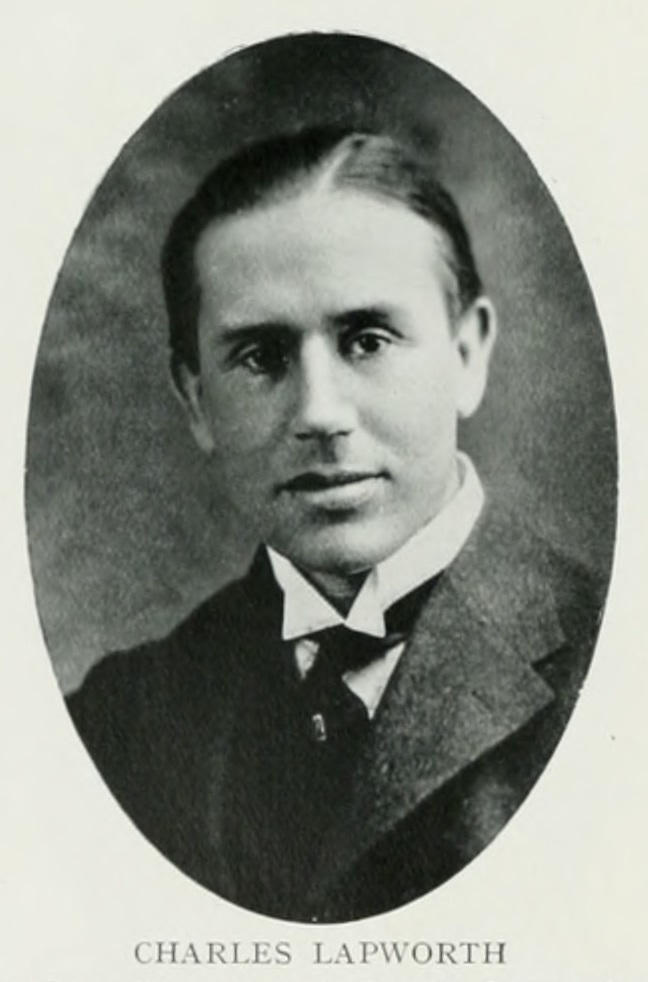
Lapworth was a Socialist and brought his politics with him to Los Angeles during a period where the political movement was gaining traction within the city. Albert Porter seems to have left Lapworth to his own devices, trusting that his editor’s previous experience with the newspaper business would allow Porter to be completely hands-off. Indeed, Lapworth’s work during Porter’s ownership demonstrated care and dedication to quality which allowed Porter to be a laissez-faire proprietor. Lapworth seemed aware that The Graphic was not a “political” magazine and seems to have minimized politics in his editorials. Of course, commentary that skirted egalitarian rhetoric would not have been out of place in 1916 Los Angeles as Job Harriman’s near-successful mayoral campaigns as a Socialist candidate were indicative of the political climate at the time.
While Lapworth minimized politics, one topic that Lapworth was particularly passionate about was interventionism in WWI. As a British subject, Lapworth was very much concerned with what was happening in Europe and advocated the United States’ involvement in the conflict. This is seen throughout The Graphic during Lapworth’s years as editor. Lapworth’s Graphic was heavily saturated with political cartoons that denounced German "kultur" as barbaric and portrayed the U.S. as the only entity able to restore peace. These cartoons were frequently recycled from more established newspapers (mostly from the Midwest but England as well) and frequently ended up on the front page. His editorials made regular appeals to lure Angelenos away from isolationism, and when The United States finally entered the War, he wrote an editorial begging Angelenos to "take the war seriously."
"Now that our own sons are being drafted we also understand better what war means. We are realizing that nowadays, there is little romance about it. We are likely to be rudely shaken out of our conception of war as a storming, mounted on a wonderful charger, say from the Baldwin stables, right up to the muzzle of a gun and getting away with it; and then being nursed back to a delicious convalescence by a beautiful Red Cross nurse who is a titled lady in disguise. Modern war is an awful business, as the European peoples know, and if we are to be victorious, it means that we have to excel in modern methods of war, however awful…It means that the people who are now contributing their loved ones to the cause, possibly to find a grave in Flanders, are going to be impatient of anything that savors of party politics."
The statement may feel condescending in some respects, but Lapworth was a firsthand witness to Englishmen (and women) caught up in some kind of romanticism of war only to meet the brutal reality of things like trench warfare, mustard gas, and irreparable disfigurements. Lapworth left Europe just as the reality of this warfare was setting in and it would be hard to imagine that the sentiment is anything but genuine.
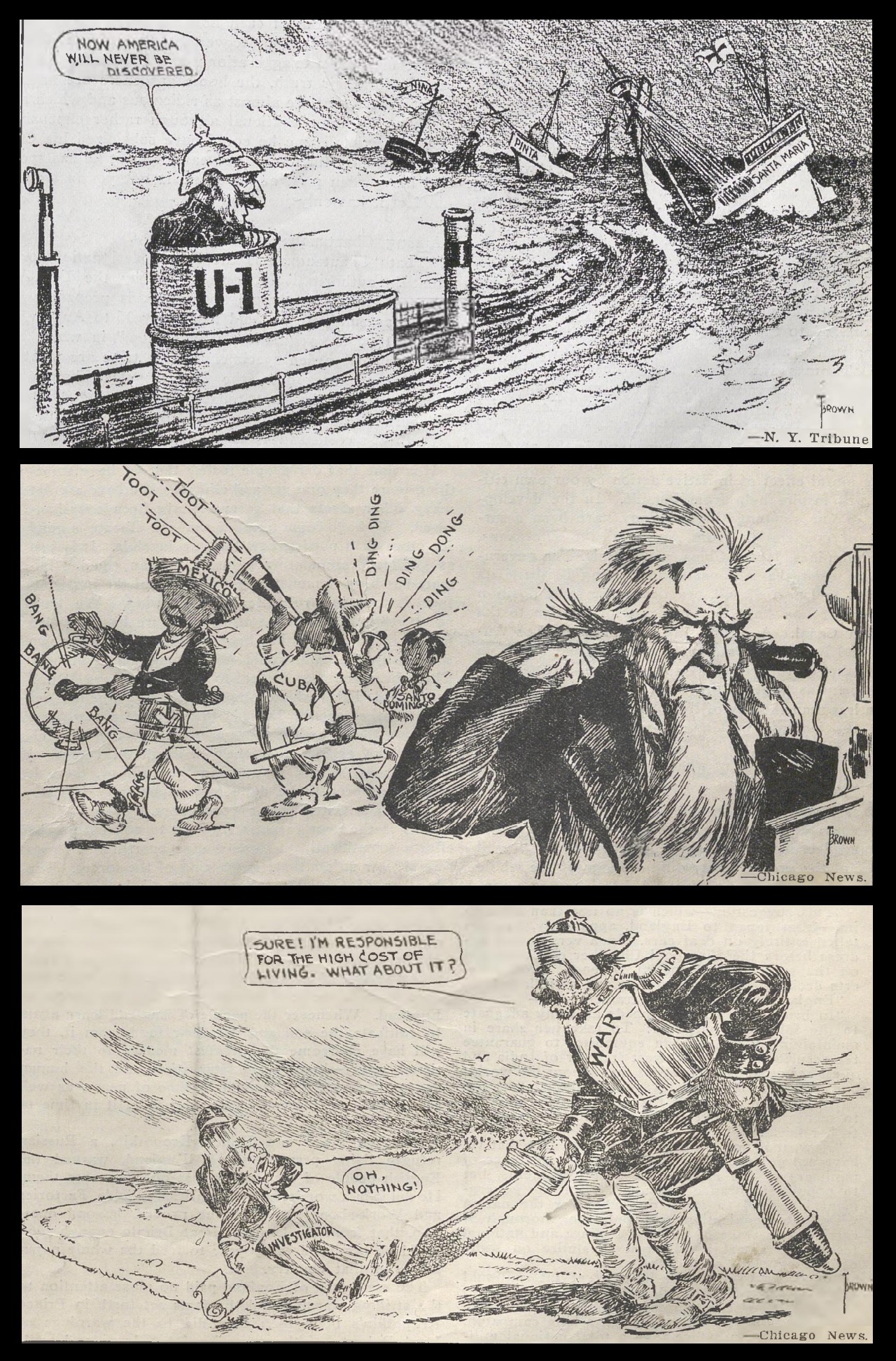
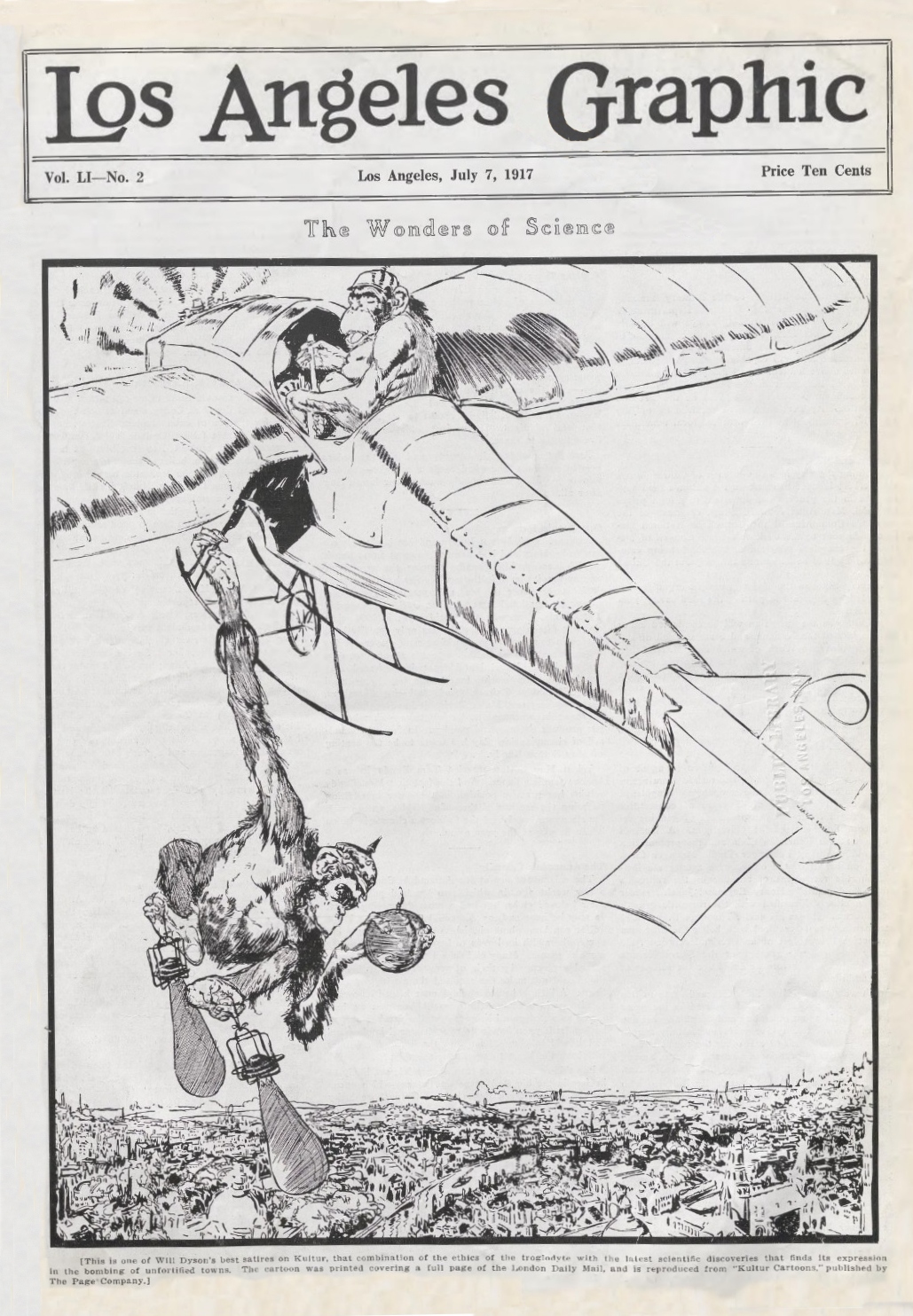
At some point, Albert Porter decided to sell The Graphic. The details were never laid out anywhere, but the story seems to be less about needing liquid assets and more about wanting a person who was passionate about the publication to own it. The one detail that was reported was that Porter gave Lapworth a three-month option to purchase the magazine. Lapworth, more than likely, did not have the funds to buy the publication outright but had an old friend from his London newspaper days that had recently returned to his hometown of Los Angeles. The friend, Elbridge Rand, was a member of one of L.A.’s wealthiest families and was determined to find his own path in the world.
Rand takes Command
Elbridge Rand was born in Iowa in 1887 but relocated to Los Angeles with his family sometime in his late teens. His father, Charles, had passed away, leaving his mother, Lilian Cora Rand, with substantial means. Press descriptions of Mrs. Rand frequently felt the need to state that she was "one of the wealthiest women in California." Her son Elbridge, was incredibly handsome, yet, by all accounts, he was not content to lean upon either his social standing or his good looks and was determined to carve out his own niche in the world. The only problem was that he hadn’t quite found that particular niche. Rand’s drive and determination were noted in a 1908 Herald article, "Young Mr. Rand (20), who entered Harvard only last year, had been applying himself to his studies with energy and intentness, and had doubtless overworked himself, being ambitious and a hard student, determined to make of himself a fine scholar and a successful graduate in too short a time.” In his ambition as a student at Harvard University, he had overexerted himself to the point of exhaustion and ignored symptoms of appendicitis that ultimately led to his hospitalization. A timely appendectomy saved Rand, but the experience spurred some soul-searching. The Herald reported that "It is not unlikely that he will leave college for the time being, at least possibly for an entire year—and come back to California…"
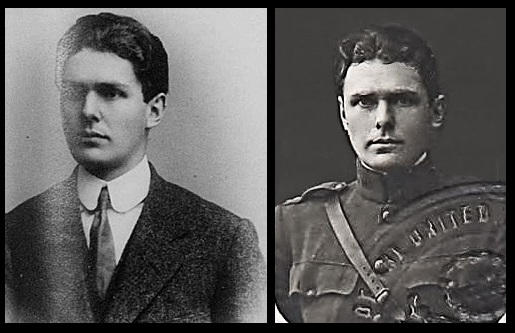
Rand returned to Los Angeles, but it seems he never returned to his studies; the fact is there was too much opportunity for a young man of means to have any regrets. In 1910 Rand married Lucille Gage, the daughter of California Governor Henry T. Gage (Gage was the same Governor who George Rice had endorsed in the Western Graphic a decade earlier) in Lisbon. Henry Gage had recently been appointed as Ambassador to Portugal, and in 1911, it was reported that the newlyweds had moved to Florence, Italy. It’s very difficult to pinpoint when Rand may have met Lapworth, but it was probably in Italy when Lapworth was writing his book. It was also around this time that Rand expressed an interest in journalism and began to pursue it as a career. In a very bizarre development, Lucille Rand was arrested in 1913 for kidnapping while in Dublin. She was freed, but her arrest turned into an international incident, and newspapers reported that, at that point, she was a resident of London. This detail is, perhaps, the only evidence of Rand’s time in London. There’s no proof, but it seems reasonable to conclude that the more established journalist, Lapworth, had taken the fledgling journalist, Rand, under his wing. By August 1914, England had entered the war, and by 1916 Lapworth had left Europe for the United States. By the end of the year, he had settled in Los Angeles, where he found a job with A.D. Porter at The Graphic. When Porter gave Lapworth the option to purchase the magazine, Lapworth probably roped his old friend into financing the venture.
On June 20th, The Los Angeles Times broke the news that Lapworth and Elbridge Rand had purchased The Graphic: "Mr. Lapworth has held an option on the purchase of the journal from A.D. Porter for the last three months and has now entered into this partnership with Mr. Rand…" Lapworth and Rand were now co-owners of The Graphic, and their first collaboration was published June 23, 1917, but there was not much to distinguish that issue (and the next few issues, for that matter) from earlier incarnations of the magazine. The July 28, 1917, issue changed that.
